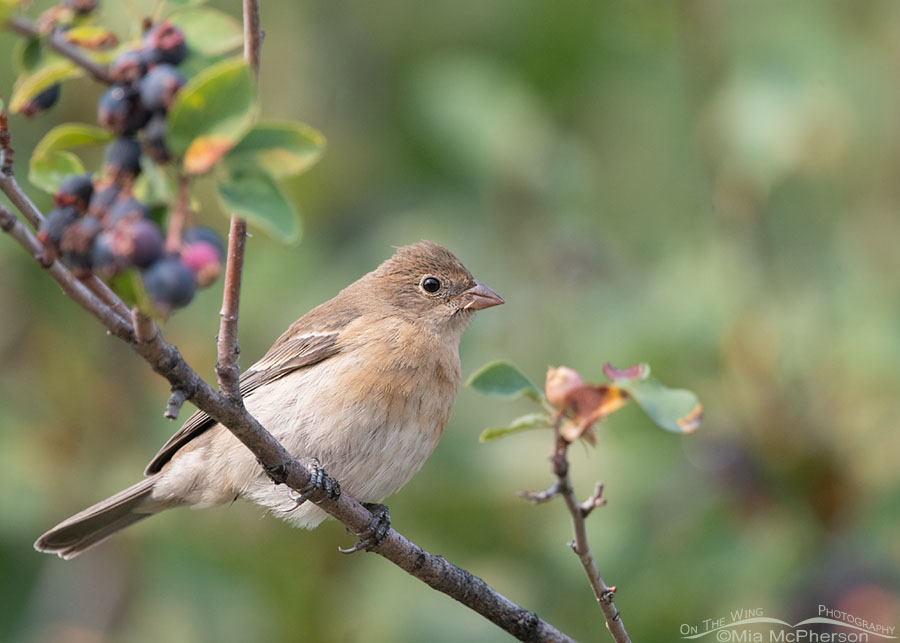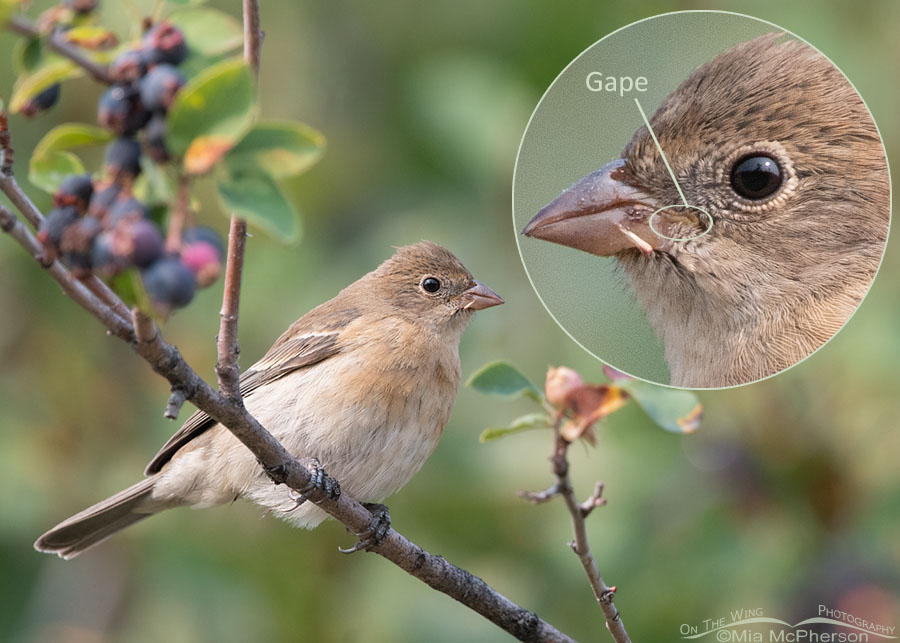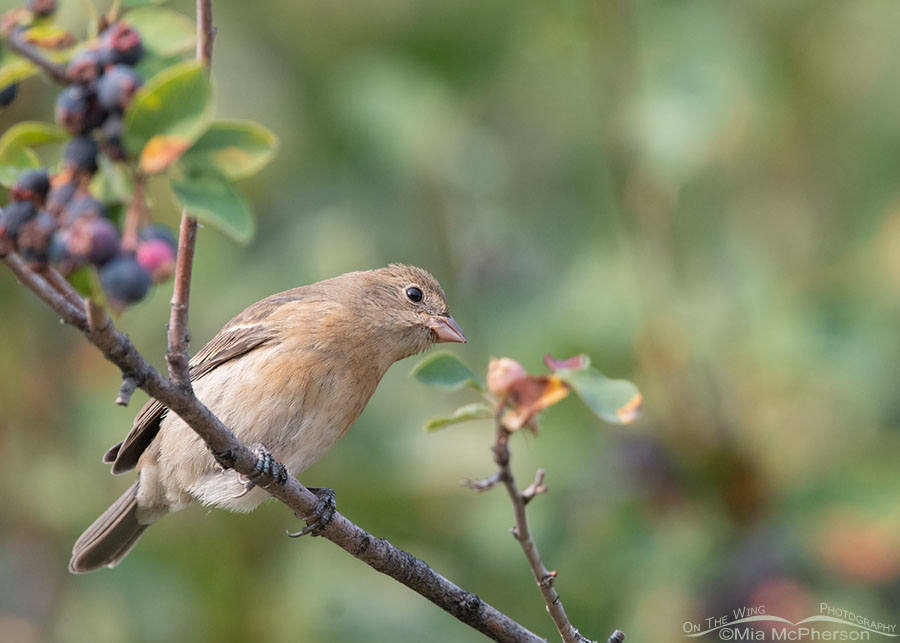 Immature Lazuli Bunting perched in a serviceberry – Nikon D500, f7.1, 1/800, ISO 800, Nikkor 500mm VR with 1.4x TC, natural light
Immature Lazuli Bunting perched in a serviceberry – Nikon D500, f7.1, 1/800, ISO 800, Nikkor 500mm VR with 1.4x TC, natural light
When I photographed this immature Lazuli Bunting three years ago today these images were eclipsed by me finding a rare Baltimore Oriole in the same area of the Wasatch Mountains. My report was the 7th confirmed sighting of a Baltimore Oriole in Utah.
Okay, back to the Lazuli Bunting.
I haven’t seen many Lazuli Buntings this month and that may be because the serviceberries lining the roads I take in the Wasatch Mountains are pretty bare of fruit due to our drought conditions this year. Right now the buntings should be fattening up for their fall migration so I’m certain they have moved around to find ripe berries somewhere else.
I am often asked for bird identification via messages, emails, or in the field and I very aware that juvenile and immature birds can be tricky. Immature Lazuli Buntings can look superficially like the females of this species.
 Immature Lazuli Bunting perched in a serviceberry – Inset showing the fleshy gape
Immature Lazuli Bunting perched in a serviceberry – Inset showing the fleshy gape
The gape tells me that this Lazuli Bunting is definitely an immature bird. Adult females would not show this fleshy gape, their gape is smoother and less fleshy looking. Sure, there are plumage differences between immature Lazuli Buntings and mature females of this species but the fleshy looking gape is a great key feature to look for in the field and they show that feature even when they are leaving on fall migration.
 Young Lazuli Bunting checking for ripe serviceberries – Nikon D500, f7.1, 1/800, ISO 800, Nikkor 500mm VR with 1.4x TC, natural light
Young Lazuli Bunting checking for ripe serviceberries – Nikon D500, f7.1, 1/800, ISO 800, Nikkor 500mm VR with 1.4x TC, natural light
I have missed seeing the adult and immature Lazuli Buntings feasting on the ripe and juicy serviceberries this summer. I hope that this winter we will have ample snow and next year a wet spring so the shrubs can set fruit for the birds. Given that we are in a mega drought I am not going to hold my breath or count on it.
Life is good.
Mia
Click here to see more of my Lazuli Bunting photos plus facts and information about this species.


Wonderful pics highlighted by a very interesting narrative. Seems like I learn something new with almost every post. Thanks Mia.
Thank you for the education (teemed with beauty). I do hope your drought breaks. Ours did. Finally.
wow — did not see the gape without the blow-up image —
Hmm, I would not even see the gape color on the bird until you circled and mentioned it. My eye sight is not that good. Hope you are having a wonderful day. Did get some rain in my area, but the smoke is still there and not much sun shine.
A nice morning lesson on Lazuli Bunding ID. Thank you. Hope you all get some rain (a lot of rain but not all at the same time). A return to an old time rainy season in spite of or because of climate change, but it seems like the west is caught in a long drought cycle.